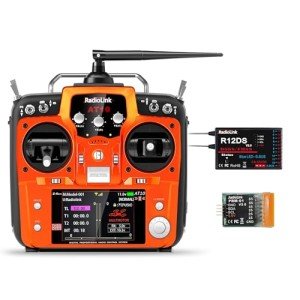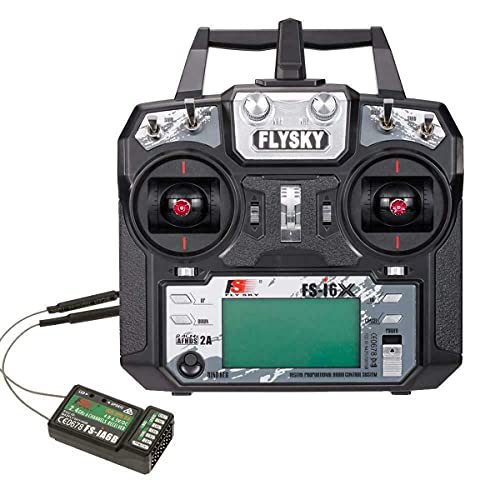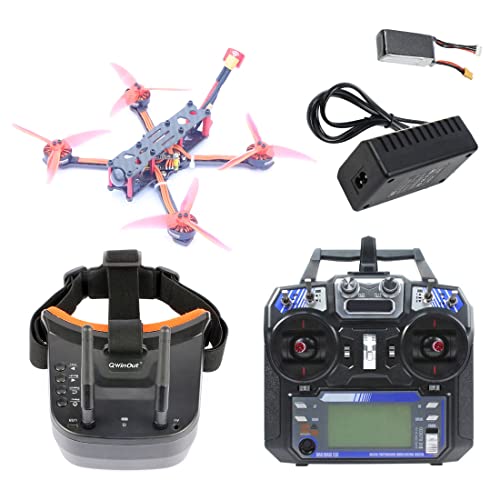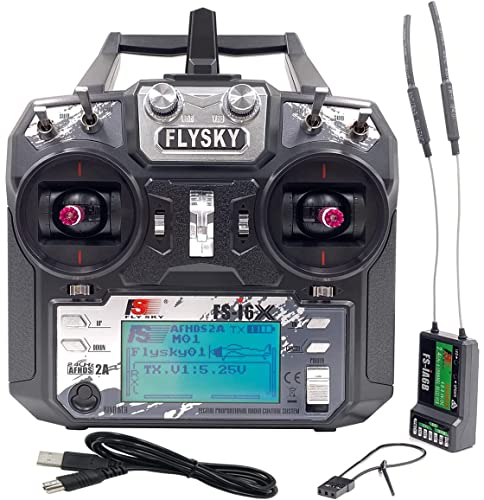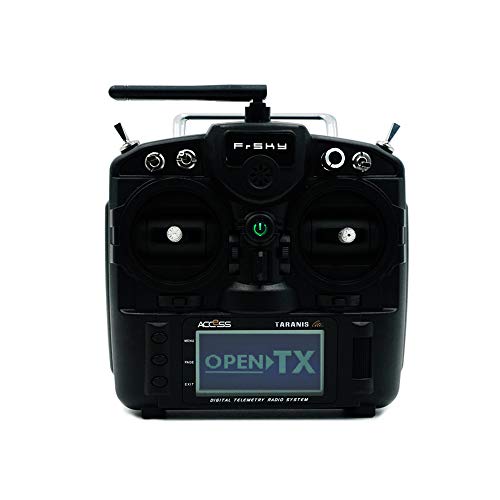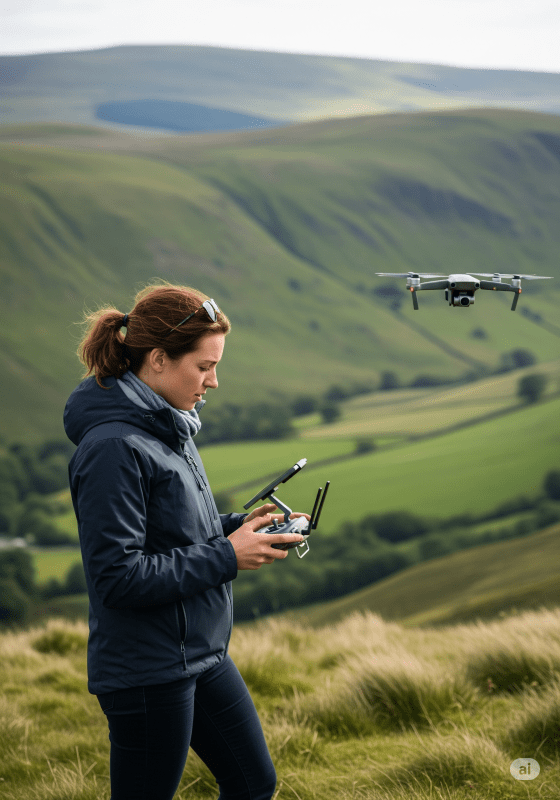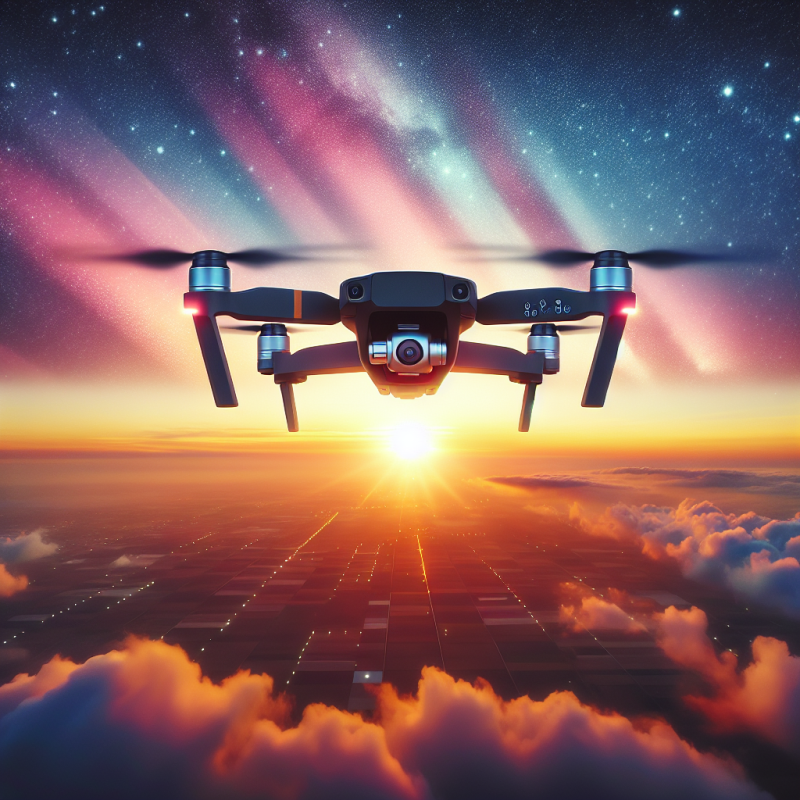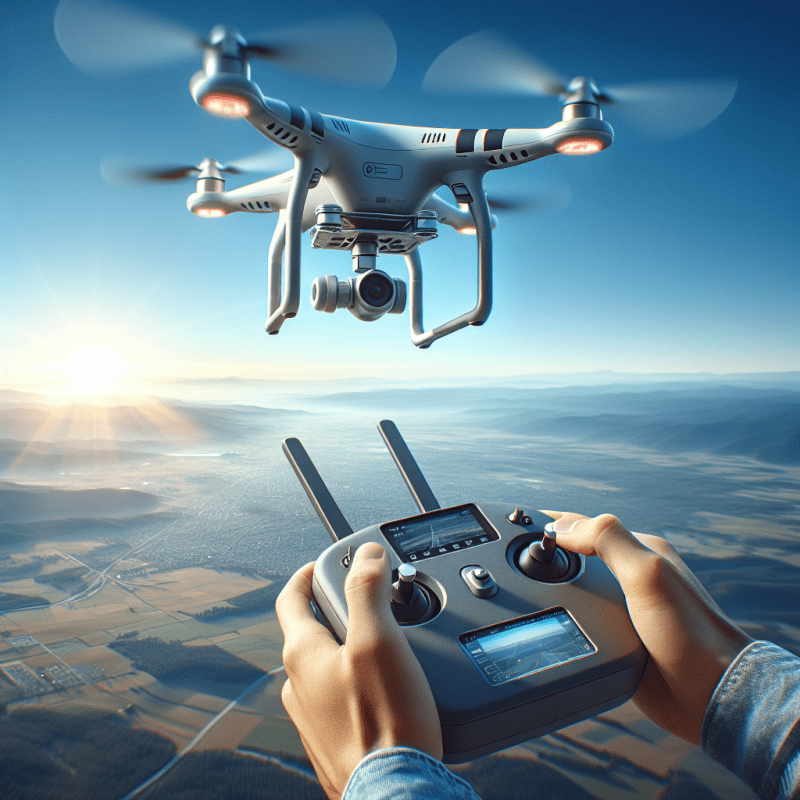Drone Transmitters: The Technology Behind Remote Flying
Without a proper drone transmitter, the art of remote flying would not have been possible. A drone transmitter, also known as a remote controller or remote, is an essential tool that pilots use to control their drones or aerial vehicles. However, not all drone transmitters are created equal, and different models come with various features, build quality, and reliability.
How Drone Transmitters Work
Drone transmitters work using radio waves. Every time you press a button on your remote controller, your input triggers a radio signal that is sent to your drone's receiver. The receiver then responds to your command, and your drone performs the desired maneuver. The signal sent from the transmitter to the drone is encrypted, and only the receiver can interpret the command.
There are two primary types of drone transmitters- single-stick and dual-stick. Single-stick transmitters use a single joystick-like control pad that moves in multiple directions to control the movement of the drone. Dual-stick transmitters, on the other hand, use two control sticks- one for throttle control and the other for direction.
Radio Frequencies and Channels
Radio frequencies and channels are an essential aspect of drone transmitters. Each frequency has its advantages and disadvantages, and pilots must choose the frequency that is best suited for their needs. Most drone transmitters operate on either the 2.4GHz or the 5.8GHz frequency band.
The number of channels determines the amount of information that can be transmitted from the remote controller to the drone. More channels mean more information, which allows for more precise control over the drone. However, it's essential to note that more channels also mean a higher price point.
Features of Drone Transmitters
Modern drone transmitters come with an array of features that make them user-friendly, intuitive, and efficient. Some common features include:
- FPV Screen: A built-in screen on the remote that allows you to see live video feed from the drone
- GPS: A GPS system that helps the drone to fly more precisely and allows for Return-to-Home (RTH) features
- Telemetry: Live data sent from the drone to the remote controller, such as battery life, altitude, and speed
- Adjustable Gimbal: Allows you to adjust the camera's angle while the drone is in flight
- Customizable buttons: Enables you to personalize the controls to suit your needs and flying style
Having a drone transmitter that comes with these features elevates your flying experience, and you can fly your drone with more confidence, knowing that you have full control over it.
Conclusion
Drone transmitters are the backbone of remote flying. They allow pilots to control their drones with precision and safety. Understanding the technology behind drone transmitters, such as radio frequencies, channels, and features, can help you choose the right remote controller for your needs.
Understanding the Different Types of Drone Transmitters
Drone transmitters are the devices that allow pilots to control their drones from a distance. There are different types of drone transmitters available in the market, and it can be challenging to choose the right one that suits your needs. In this article, we will discuss the different types of drone transmitters and their features.
1. Basic Transmitter
Basic transmitters are simple, affordable, and easy to use. They usually come with a few buttons that control the drone's basic functions, such as takeoff, landing, and altitude control. Basic transmitters are ideal for beginners and those who want to fly their drones for recreational purposes.
2. Advanced Transmitter
Advanced transmitters are more complex and feature-packed than basic transmitters. They come with several buttons, switches, and knobs that allow pilots to control their drones precisely. Advanced transmitters often come with a broader range of frequency channels, allowing pilots to fly their drones in crowded areas with minimal interference. They also offer features such as GPS, telemetry feedback, and advanced flight modes.
3. Gamepad-Style Transmitter
Gamepad-style transmitters are designed to mimic the look and feel of a gaming controller. They offer a comfortable grip and are perfect for those who have experience playing video games. Gamepad-style transmitters come with dual joysticks that offer better precision and control over the drone's movements. Some also come with additional buttons for special functions such as emergency landing and photo capture.
4. Smartphone Transmitter
Smartphone transmitters are becoming increasingly popular as they allow pilots to control their drones using their smartphones. The transmitter connects to the phone via Bluetooth or Wi-Fi, and pilots can control the drone using their phone's touch screen. Smartphone transmitters are compact, lightweight, and easy to use, making them ideal for beginners and those who prefer to travel light.
In conclusion, understanding the different types of drone transmitters is essential for choosing the right device that suits your needs. Whether you are a beginner or an experienced pilot, there is a drone transmitter that can enhance your flying experience. Take the time to research and compare different models before making a purchase.
Maximizing Your Drone's Performance with the Right Transmitter
When it comes to piloting a drone, having the right transmitter can make all the difference. The transmitter is what allows you to communicate with your drone, telling it where to go and what to do. But not all transmitters are created equal. Here are some tips for maximizing your drone's performance with the right transmitter:
1. Look for a transmitter with a solid connection: The last thing you want when flying your drone is to lose connection with it. Look for a transmitter with a strong signal that won't drop out unexpectedly.
2. Consider ergonomics: The transmitter will be in your hands for the duration of your flight, so make sure it's comfortable to hold and easy to use. A good transmitter should have intuitive controls that are easy to reach.
3. Don't skimp on features: Many transmitters come with extra features and settings that can greatly enhance your flight experience. Look for a transmitter with a variety of options, such as speed adjustments, return-to-home functions, and customizable settings.
4. Consider compatibility: Not all transmitters will work with every drone. Make sure you choose a transmitter that is compatible with your specific drone model.
5. Think about range: Depending on what you plan to use your drone for, you may need a transmitter that can communicate over long distances. Check the range of any transmitter you're considering and make sure it will meet your needs.
By taking these factors into account, you can choose a transmitter that will help you get the most out of your drone. Whether you're a seasoned pilot or just starting out, the right transmitter can make all the difference.
Radiolink RC Transmitter and Receiver for Drones
Experience seamless drone control with Radiolink's RC Transmitter and Receiver
Product information
$158.89
Product Review Score
4.74 out of 5 stars
149 reviewsProduct links

